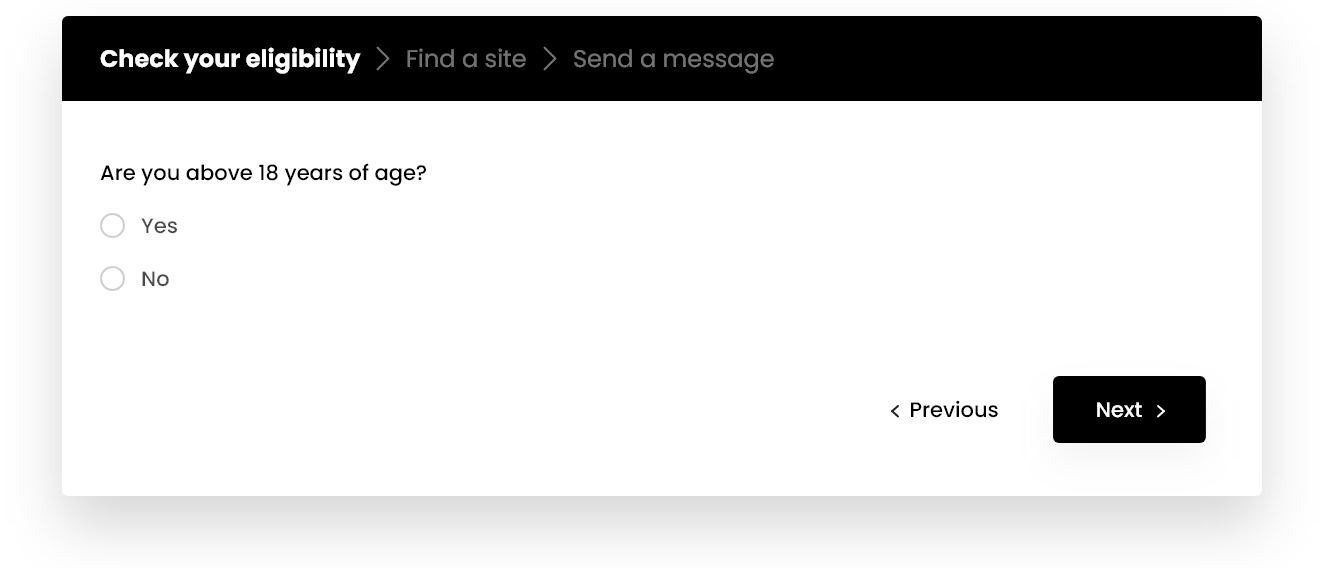The prescreener preview is complete. You may now close the preview.
Detailed Description
Simple Text Block
You can use content blocks to arrange your articles, large texts, instructions. Combine these blocks with media blocks to add illustrations and video tutorials. You can use various content blocks to work with your text. Add quotations, lists, buttons. Select your text to change its formatting or add links. You can use various content blocks to work with your text. Add quotations, lists, buttons. Select your text to change its formatting or add links.
Call 1800-9860-568 now to find out if you are eligible.

Check your eligibilityFind a siteSend a message
Take up this questionnaire to help us determine if you have symptoms that are common to this clinical study. If you have the common symptoms, you may be eligible to take part in the study.
Age
33 - 94
Gender
Both
NCT ID
TX12624
Phase
2
Status
Recruiting Now
Medical Condition
Weight Loss
How is Plaque Psoriasis treated?
Medical Condition
A short sentence to introduce what to expect in the about condition section
Learn moreThe Study
A short sentence to introduce what to expect in the about condition section
Learn moreAbout Clinical Trials
A short sentence to introduce what to expect in the about condition section
Learn moreYour Journey
Receiving the medication
You would receive etanercept (Enbrel) twice a week for 12 weeks and then once a week for 12 weeks. Etanercept, as well as study related medical care, is provided at no cost.
Visiting the study site
Study participation involves approximately 8 visits to your local study center over 6 to 7 months.
Follow-up
There would also be a follow-up telephone call 30days after completing the study. No visits are required after participation is complete.